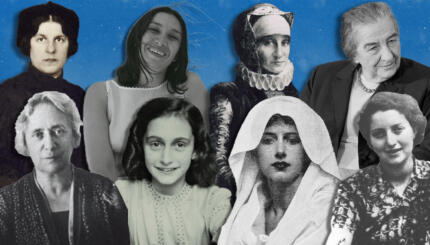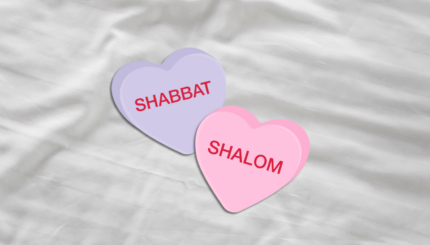I went shopping for a new tallit (prayer shawl) at two competing Boston Judaica shops last week. In both stores I found the tallitot, the plural for tallis, separated by gender. And obviously so. The experience reminded me of when I was first pregnant with my daughter and first learned she would be a she. As I perused the baby clothing aisle at Target, I realized half the items on display were definitively not for my kid. The gender messaging wasn’t subtle. Pale innocuous, quiet, unassuming pink/purple for baby girls and bold, statement making, attention getting red, blue and green for boys.
The prayer shawls were no different. The men’s tallitot, generally speaking, were wool or some other substantive cream/white fabric with color block design work. They were serious pieces of religious garb ranging from simple and dignified to stunning and stately.
The designated women’s tallises on the other hand were also mostly white or cream but light, airy fabrics like lace, something sheer, or something very very shiny. They were flimsy and fly away. None having the gravitas I’m seeking in a tallis. Most were decorated in Pepto Bismol pink or light lilac. I saw lots of flowers and wispy designs conjuring images of a field of wildflowers or a seas of cream puffs. Although many were quite pretty, especially if I were wearing them as lingerie or a fancy dress, none seemed to take themselves seriously enough to be my tallis.
As a rabbi, my tallis is my vestment. It is the thing I wear to show people that I am a rabbi, a professional. Where I live in The South everyone knows what a minister is. Being able to identify as a clergy person is important because it is understood. So I need my tallis to be something which communicates a certain sense of kavod, of respect for the office.
As a female rabbi, it is particularly important to me that the clothing I wear outwardly communicate something serious. As a woman member of the cloth, people feel welcome to comment on my attire and appearance-both good and bad-in ways which they would not if I were a man. And while I find this reality unpleasant and unfair, it is still my reality. So it is important to me that I dress the part. My tallis needs to be stately without being either too pretty or too handsome; neither too girly, frilly and sweet nor too bold, blockish, or assertive.
Most importantly to me, however, is as a Jew, especially as a liberal Jew, I value gender identities across the spectrum. If we as Jews embrace a transgendered world, shouldn’t our religious ornamentation do the same? I do not like the message the Judaica stores were sending. The separated racks of male and female tallitot said, here, we expect you to be one or the other. But that is not real. I would have liked to have seen more options which were less extremely “MALE” and “FEMALE” and had more elements of both soft and strong. Because we are all are the spectrum somewhere. And while I am happy that women who love pink and men who love wool have ample selection in the tallis department, what about the rest of us?



